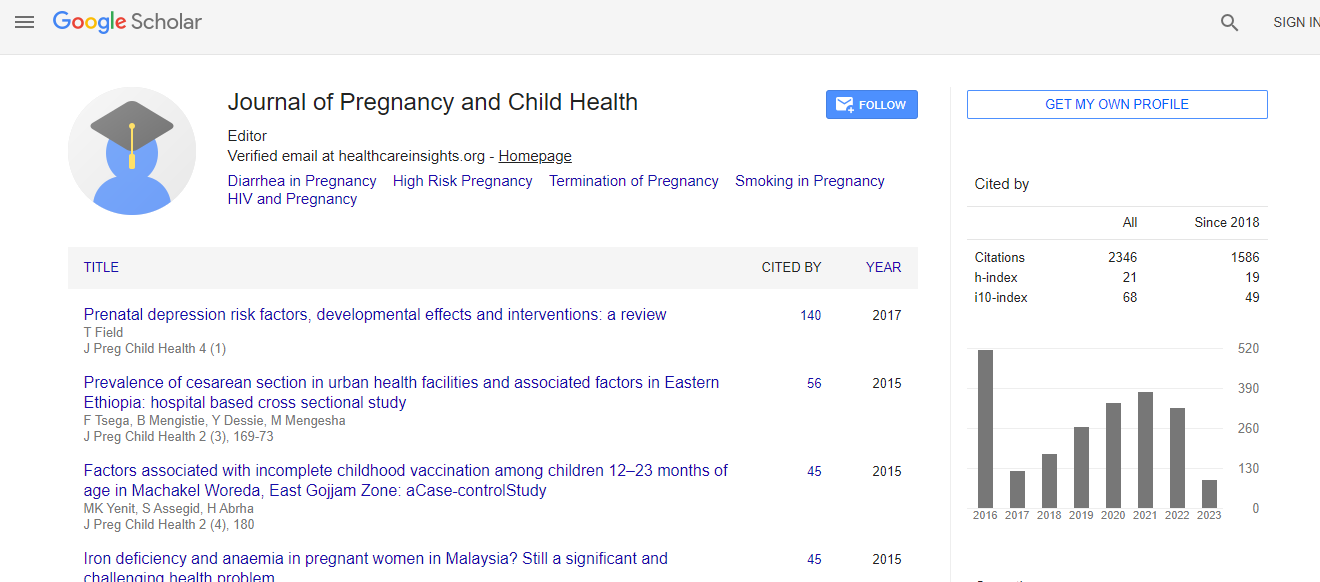Research Article
Prevalence and Factors Influences Utilization of Modern Contraceptive Methods among Married Women of Reproductive Age Group (15-49 Years) in Holeta Town, Oromia, Ethiopia 2016
Teka Girma1*, Abdurahman Sultan2 and Kebede Legese3
1Ambo University, College of Medicine and Health Sciences, Department of Public Health, Ethiopia
2Oromia Health Berauo, A A Zuria Health Department, Ethiopia
3Ambo University, College of Medicine and Health Sciences, Department of Medicine, Ethiopia
- *Corresponding Author:
- Teka Girma
Ambo University, College of Medicine and Health Sciences
Department of Public Health, Oramia, Ethiopia
Tel: 251920157250
E-mail: teka_girma@yahoo.com
Received date: July 21, 2016; Accepted date: July 26, 2016; Published date: July 31, 2016
Citation: Girma T, Sultan A, Legese K (2016) Prevalence and Factors Influences Utilization of Modern Contraceptive Methods among Married Women of Reproductive Age Group (15-49 Years) in Holeta Town, Oromia, Ethiopia 2016. J Preg Child Health 3:272. doi:10.4172/2376-127X.1000272
Copyright: © 2016 Girma T, et al. This is an open-access article distributed under the terms of the Creative Commons Attribution License, which permits unrestricted use, distribution, and reproduction in any medium, provided the original author and source are credited.
Abstract
Background: Family planning refers to the use of various methods of fertility control that will help individual men and women or couples to have the number of children they want and when they want them in order to assure the wellbeing of the children and the parents. Rapid population growth is of the prominent challenge of our planet. This major challenge is not equally shouldered by each nation. Developing countries are still suffering from the wave of unchecked population growth. The aim of this study was to assess the prevalence and factors influencing utilization of modern contraceptive method among married women of reproductive age group in Holeta town, 2016. A Crosssectional community based study design was conducted to assess the prevalence and factors influencing utilization of modern contraceptive methods among married women of reproductive age group (15-49 year) in Holeta town from May 10 to 28, 2016. The participants were selected by systematic random sampling technique and data was collected from 295 married women of reproductive age group by interviewer administered questionnaires were employed. Binary logistic regression models were used to assess associations between factors and Modern Contraceptive method use. Results: Modern contraceptive prevalence rate among married women was 218 (73.9%). Inject able contraceptives were the most frequently used methods143 (65.6%), followed by implant 45 (20.6%), pills 16 (7.3%), IUD (5.0%) and condom 2 (0.9%). Multinomial logistic regression model revealed that age (AOR 2.389, 95%CI 1.113-1.733 p-0.004), occupation (AOR1.555, 95% CI 1.234-1.96 p-0.000), culture (AOR 2.441, 95% CI 1.064-5.602 p-0.o35), religious father (AOR 0.013, 95% CI 1.048-3.865 p-0.036), and stillbirth (AOR 0.363, 95% CI 0.133-0.993 p-0.049) were significantly associated with the use of modern contraceptives methods. Conclusion: The overall utilization of modern contraceptives in this study was 218 (73.9%). The most common modern contraceptive method used was injectable 143 (48.5%). The finding of this study highlighted that women’s occupation, age, culture, religious fathers and number of desired male children were important factors that influenced the use of modern contraceptive methods. Among these the most significant factors influencing utilization of modern contraceptive was women’s occupation. Recommendation: Policy makers and implementers should work on those factors to increase the utilization of modern contraceptive methods. Since static family planning services are not accessible to change the community’s culture, other strategies like outreach methods should be considered. Further study is required to explain perceptions and barriers towards modern contraceptive use among the religious father.

 Spanish
Spanish  Chinese
Chinese  Russian
Russian  German
German  French
French  Japanese
Japanese  Portuguese
Portuguese  Hindi
Hindi 
